Cancer Is Stalking Asian American Men. Science Isn’t Doing Enough.
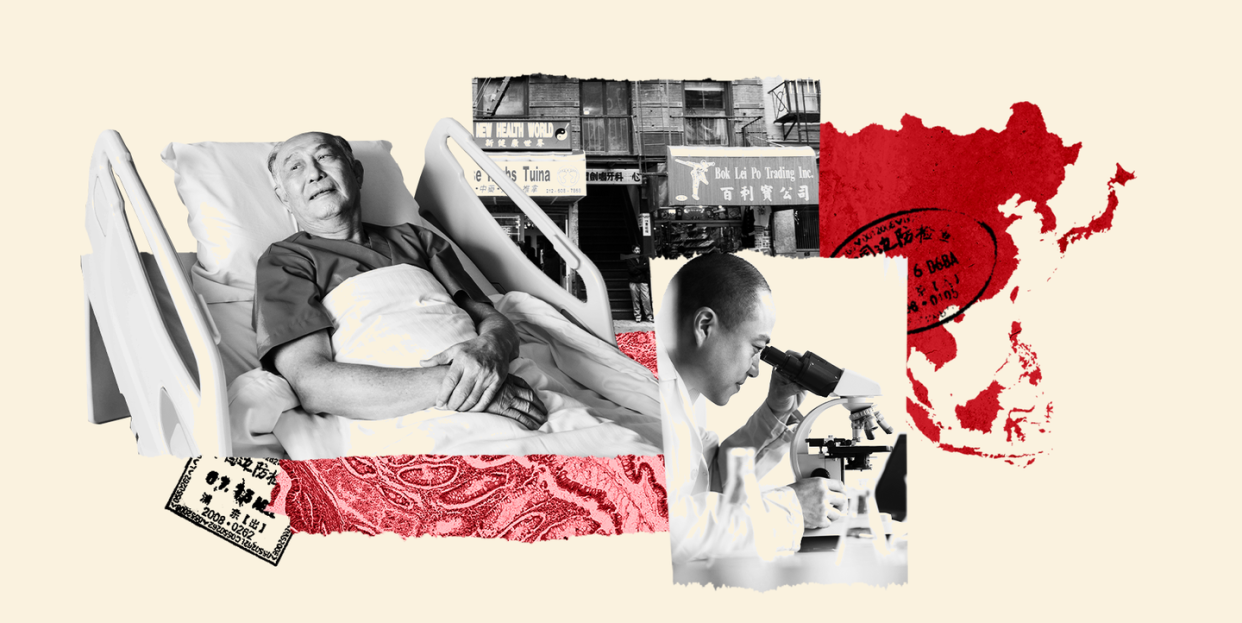
FOR ASIAN AMERICANS, Native Hawaiians, and Pacific Islanders (AAPIs), the number one cause of death isn’t heart disease. It’s cancer.
There are several reasons why, which includes the fact that there are high rates of cancers often found in the countries where AAPIs emigrate from, the effects of migration, and lower screening rates compared to the majority of Americans.
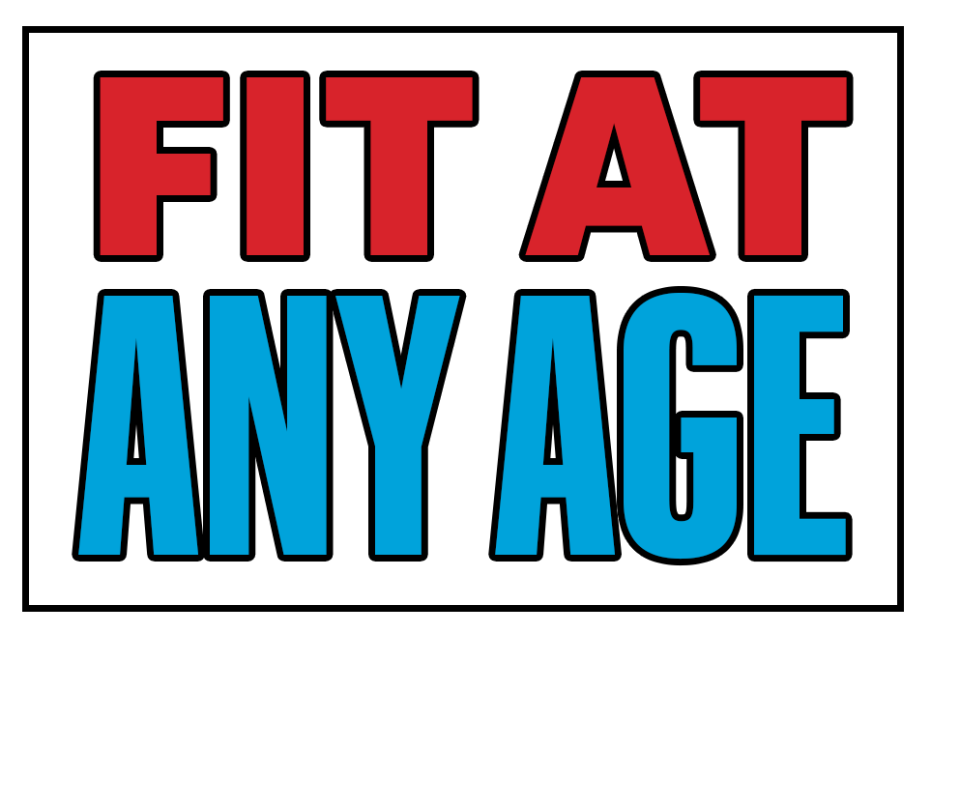
Research also shows that language barriers, cultural stigma, lack of public awareness, and the model minority myth contribute to those low screening rates. And while AAPIs are over-represented among primary care physicians (11.2 percent compared to six percent of the total US population), a 2019 study of clinical research projects found that only 0.17 percent of national funds went to research about AAPIs.
To help understand the details of all this, we talked to Asian American cancer expert and oncologist Dr. Richard J. Lee, M.D., Ph.D.
On top of Dr. Lee's medical experience, he's the lead author of a comprehensive 2021 research paper on disparities in cancer care for Asian Americans. Lee is also an assistant physician at Massachusetts General Hospital and an assistant professor at Harvard University’s Medical School.
With Dr. Lee's expertise, here are the most important things you should know about Asian Americans, cancer, and men’s health.

Cancer in Asian American men is a big deal.
The rates alone are staggering.
Liver cancer rates are highest among Vietnamese men, more than 12 times greater than the rate for non-Hispanic white men. Liver cancer is also a leading diagnosis for American men of Chinese, Filipino, and Korean descent—and a top cause of death for American men of Chinese and Filipino descent diagnosed with cancer.
A study of pancreatic cancer cases between 1992 and 2015 found that Asian American men over 60 were much more likely to be diagnosed with the disease compared to women and Asian Americans under the age of 60. Prostate cancer is also common (1 in 11). And Asian Americans get stomach cancer twice as often as non-Hispanic white Americans.
Yes, smoking is a serious concern for lung cancer, but non-smokers may still put themselves at risk. While Asian Americans had lower cigarette smoking rates from 2010 to 2013 compared to white, Black, and Latinx Americans, 30 percent of lung cancer patients in Asia did not smoke.

Dr. Lee says one of the largest reasons why many AAPIs have an inaccurate perception of their cancer risk, is comparisons to the countries they immigrated from. However, research shows the longer someone lives in the United States, the more likely they are to develop a cancer profile that matches other Americans due to changes in lifestyle and diet.
Dr. Lee himself says he had a family member who was caught off-guard by their prostate cancer diagnosis because of this misconception. “My high school friends back home don’t have this,” they told him.

Gaps in care lead to cancer complications.
Research shows AAPI men deal with several issues that affect their risk of cancer.
For reasons that aren't clear, doctors aren't encouraging AAPI men to get screenings that are recommended for all men. That puts them at higher risk.
“If an Asian American is not being screened for the common cancers in other Americans, then that's a problem,” Dr. Lee says. “If the physicians are unaware of the cancers that are perhaps more common in Asian Americans, but perhaps less so in among white Americans, that's also a problem.”
And then there's the issue of smoking.
Only one third of AAPI men are likely to be recommended by a doctor to quit smoking—a significant cause of lung cancer—compared to half of all other Americans.
That said, the challenges to getting appropriate cancer care extend far beyond the physician’s office, compounding the ability for many Asian Americans to get timely and accurate treatment for what can often be a deadly disease.
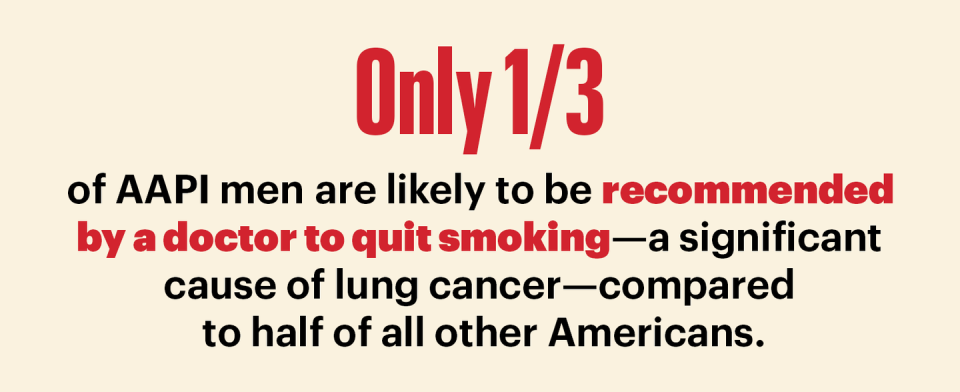

Language and culture can put up barriers to care.
AAPIs speak more than 200 languages and dialects. Dr. Lee says utilizing a medical interpreter for someone not fluent in English often means slowing down an appointment with a clinician already pressed for time.
And when translation is conducted by family members or a friend, the translation can be inaccurate or downplay a person’s risk level.
“We have numerous examples of patients’ family members who don't want to say the word cancer because that will lead to stress,” Lee said. “Or people, especially if they're younger, because of respect for their elders, they can't use certain terms. That has an obvious barrier to appropriate care.”
(If this cultural stoicism sounds familiar, director Lulu Wang talked about how her family lied about her grandmother’s cancer diagnosis on This American Life. Wang also wrote and directed a version of the story in the 2019 movie The Farewell.)
Dr. Lee also says that, universally, people diagnosed with cancer defer care because of their concern about costs for themselves and for family members. They worry about being a burden, or experience a type of distress from out-of-pocket expenses. Doing so is understandable, but Lee said “that just leads to poor outcomes.”
“We need to actually have these conversations,” he says.
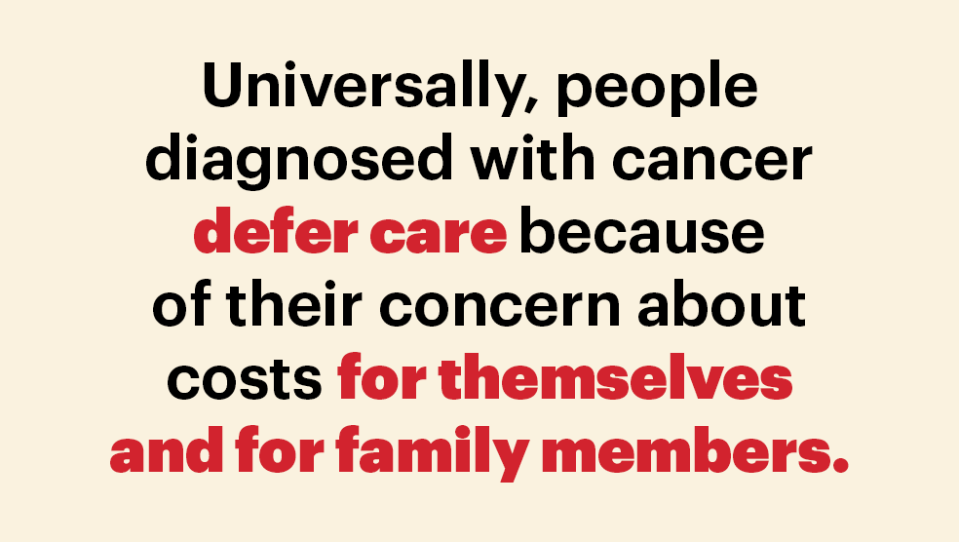

Health research isn’t keeping up with AAPI growth and diversity.
The U.S. population of AAPIs doubled between 2000 and 2020, from 10.5 million people to more than 23 million in 2020.
By 2060, the population of AAPIs is expected to grow to 46 million. But national research primarily focuses on the six largest Asian American groups—Chinese, Japanese, Vietnamese, Korean, Filipino, and Indian—leaving out many other subgroups.
In 2009, President Barack Obama signed an executive order to improve the collection of health data among AAPIs. But cancer research funding focused on Asian Americans is a tiny fraction of spending made by the National Institutes for Health. Analysis published in 2019 showed only 0.17 percent of clinical research projects funded by the National Institutes of Health between 1992 and 2018 were focused on AAPIs.
“It's the number one killer, and we're being screened less,” Dr. Lee said. “It stands to reason that we need more powerful advocacy, and therefore, more NIH funding for cancers that particularly impact Asian Americans.”
Representation in clinical trials is also very low. In 2018, only 0.38 percent of NIH clinical research expenses went to AAPI research studies. Language access was the top reason cited for preventing participation.
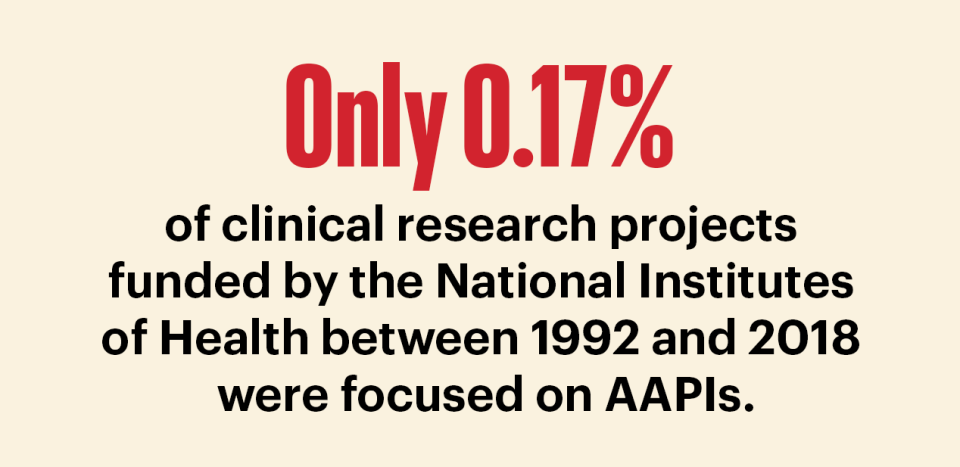

"Model minority" assumptions backfire.
In case you're unfamiliar with the term: "This myth characterizes Asian Americans as a polite, law-abiding group who have achieved a higher level of success than the general population through some combination of innate talent and pull-yourselves-up-by-your-bootstraps immigrant striving," according to Learning for Justice.
Yes, overall, AAPIs have a high overall median household income of $73,600, lower poverty rate of 12.1 percent, and educational attainment rate (51 percent have a bachelor’s degree) compared to all US households.
And, yes, these factors have contributed to a myth of a “model minority” that is educated, successful, and knowledgeable. However, there are huge differences within AAPI subgroups— especially for Burmese and Bhutanese Americans—affecting cancer risk, screening, and overall access to medical care.
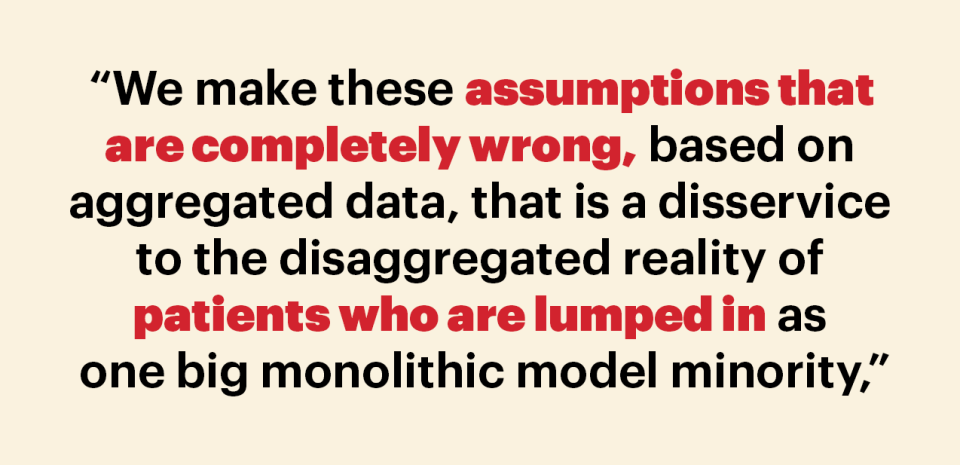
Dr. Lee’s research found grouping together these ethnic groups under “Asian” can lead to harmful misconceptions by medical practitioners about access to treatment, genetic or cultural risk factors, and misguided public health policies.
“We make these assumptions that are completely wrong, based on aggregated data, that is a disservice to the disaggregated reality of patients who are lumped in as one big monolithic model minority,” Dr. Lee says.

Lowering risk requires multiple strategies.
Dr. Lee says reducing the number of deaths and cancer cases among Asian American men requires patients and clinicians working together to address gaps in screening, testing, and public awareness.
Until cancer and screening information is translated into many more languages, Dr. Lee has two recommendations for the average guy.
First, AAPI men who smoke cigarettes should quit. “Both to prevent lung cancer, but for all the other smoking related cancers that include things like pancreas, bladder, kidney, esophagus, and stomach cancers,” says Dr. Lee.
Secondly, AAPI men should ask their parents and relatives for more details about their medical history and what cancers run in their families. “A lot of Asian Americans either don't know their family history, or the older generations are reticent and unlikely to sort of talk about family history,” Dr. Lee said. “This is certainly true in the Korean American household in which I grew up. Having these discussions is absolutely critical.”
You Might Also Like

